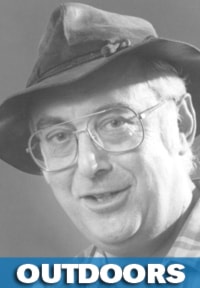We are just getting into serious hunting seasons in Canada, and already the media are in a flap about the unprecedented number of hunting “accident” injuries and deaths; five, to be precise.
Not to be unfeeling, but we can routinely blow away more people than that on any long weekend in many Canadian cities these days without the media totting up the toll from sea to shining sea.
The recent “accident” about which I can find fewest details was the one closest to home, involving a young woman being shot dead while hunting with family members near Grande Prairie.
A young Ottawa man was shot and killed while hunting with his father and cousin; also few details available.
There have been two “accidents” in BC: a man shot and killed himself while climbing over blow down logs while carrying a firearm with a live cartridge in the chamber, and, in poor visibility conditions, a hunter, thinking he was shooting at big game, shot and wounded another hunter who was seated on an ATV.
Finally, or so we hope, in Saskatchewan, a father, allegedly using a high-quality rifle scope, mistook his blaze-orange clad son for a bear and promptly shot and killed him.
Over the years I have collected court decisions arising out of hunting “accidents,” and these latest five, whether or not they get to court, thus providing more facts, do fit in with familiar hunting “accident” themes.
First, though I hate to say it, hunting in groups, especially with family groups, may be detrimental to health and life.
Second, my case collection suggests we should avoid sitting on, or riding any kind of conveyance, especially in moose country.
Two of the more outrageous items in my Hunting Accident file are the decisions of the B.C. Court of Appeal in 1962 in Regina vs. Weber and of the Saskatchewan Court of Appeal in 1969 in Regina vs. McCrea.
Around 7a.m. Weber saw something moving along Crooked River and fired two shots at 365 yards.
What he thought was a moose was really a 14-foot aluminum boat with outboard on the stern and three passengers, one of whom he killed and wounded another.
In considerably increasing Weber’s sentence for criminal negligence, Mr. Justice Robertson said: “There are reasonable rules of conduct which most hunters observe and the observance of which can eliminate so-called hunting accidents…. When (Weber) saw the boat with three men in it on the water and thought it was a moose, he cannot have taken any precaution to confirm his impression before he fired.”
McRea, another moose hunter on foot, shot dead a conservation officer who was a passenger riding on a running Bombardier, then admitted: “I didn’t know what I was shooting at when I fired.”
Chief Justice Culliton said this: “Under the common law, anyone carrying such a dangerous weapon as a rifle is under the duty to take such precaution in its use as, in the circumstances, would be observed by a reasonably careful man.”
All hunting “accident” cases, including the recant five, teach that you violate any of the basic rules of firearm safety at your and everyone’s peril.
You do not climb over fences and logs carrying a loaded firearm, you do not shoot when visibility is bad, and, the first of all rules, you never point your firearm at anything unless you intend to shoot it.
That latter rule is routinely violated by too many hunters who are too stupid and/or cheap to buy and use the excellent binoculars now available to glass their surroundings.
Instead they use their rifle scope, which always involves them in pointing their loaded firearm at things they mostly do not want to shoot, frequently other hunters.
Next, we get into the vexed and complicated questions of hunting clothing options.
I am a firm believer in the use of blaze orange in upland bird hunting, where the quarters are close and thick and the shots often quick.
Keeping track of where other hunters are and making it easy for them to know where you are is essential.
But, while big game hunting, back when blaze orange was mandatory hunting garb in Alberta, and while thus clad from head to foot in plain sight in Prairie Wildlife Management Units, I was three times “scoped” by other hunters.
I hit the dirt each time, because I was trained almost from infancy that you did not point a firearm any anything unless you intended to shoot it.
As soon as blaze orange became optional I switched to full camouflage from head to foot in the aspen parkland - boreal forest in which I loved to do my big game hunting. In those conditions, where there are usually few other hunters around, I believed, and still do, that being invisible is the key to safety.
If that son in Saskatchewan recently had not been wearing blaze orange, perhaps his father would not have seen him as, and killed him for a bear.
Bob Scammell is an award-winning columnist who lives in Red Deer. He can be reached at bscam@telusplanet.net.
